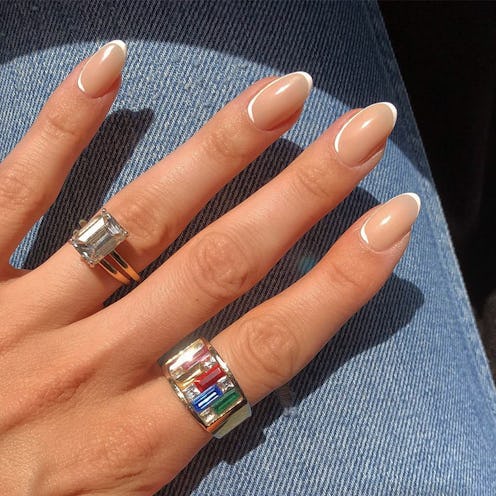Now that the temps are finally rising, the gloves and cozy socks are finally coming off, which means our hands and feet are all kinds of exposed. We don’t mind the nakedness so much, since candy-colored and bedazzled manis are on the menu for summer. And we can’t deny the invigorating rush we get from a fresh manicure. It just elevates every outfit to new heights and makes one feel a bit more polished (literally) and put-together.
That said, we admit that achieving a perfect mani—whether at home or in a salon—is not always easy. Somehow, one or several nails will end up chipped or smudged within minutes, no matter how hard we try to not touch anything. Well, the good news is, we’re all on the mani-mistakes island together, and these faux pas can be remedied. To get us properly prepped for summer, we tapped nail pro Greg Salo, president of Young Nails to give us the skinny on all the blunders we make that ruin the state our manicures. Don’t worry, we’re all guilty.
Nail Crimes
"This is a huge mistake that we see across the board, especially with non-professionals," says Greg. "It is vital to properly prepare the natural nail before starting a manicure. This means pushing back the cuticles, removing any excess skin around them, lightly removing shine with a buffer and finally, cleansing the nail with an alcohol-based product."
"Although this may seem like common sense, this is such a widespread issue," explains Greg. "Set a timer and wait for the correct amount of time for the polish dry." (It generally takes up to an hour or two for nails to fully dry, but quick-dry products can reduce the time to 20 minutes or so.)
"This is where nail polish becomes a true art," says Greg. "To apply product in thin, even coats is not an easy task and it does require lots of practice. Many people think they’re applying it thin but they’re actually applying it way too thick. This leads to the polish taking much longer to dry, and also having a bulky or bumpy look." Make sure your initial layers are thin and almost transparent so you can slowly build on the color.
"When your polish is too thick or separating, buy a new bottle," advises Greg. "Old nail polish is just not going to work as it gets chunky and won't go on evenly."
"Many people think they can just apply some color and they’re good to go," explains Greg. "But, in fact, they are short-changing themselves by not using a base coat and topcoat. Using a base gives some protection to the natural nail, prevents it from staining and also allows for a nice even surface for the nail polish to bond to. The topcoat is going to protect the color, give it more long-lasting wear and give it an incredible glossy shine."
